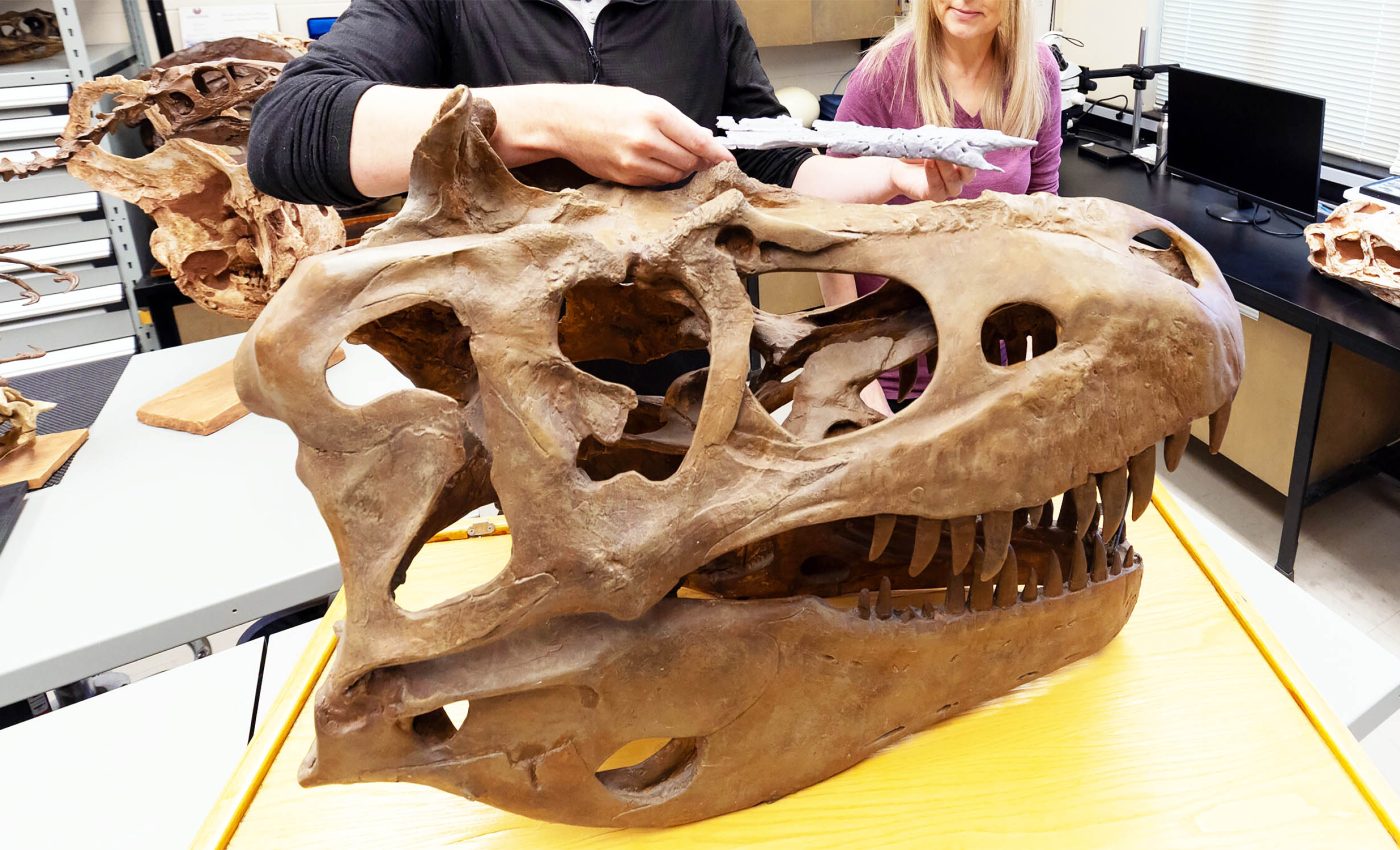
Meet the "prince of dragons," closest T-rex relative that started the tyrannosaur dynasty
Dinosaurs have long captivated human imagination. From towering giants to quick-footed hunters, these creatures ruled the prehistoric world for millions of years. Each fossil discovery brings new understanding.
A recent find has added a key piece to the tyrannosaur story. Named Khankhuuluu mongoliensis, this newly identified dinosaur sheds light on how smaller predators evolved into giants like Tyrannosaurus rex.
This breakthrough comes from a global research team led by Jared Voris and Dr. Darla Zelenitsky of the University of Calgary. Their findings appear in the journal Nature.
Khankhuuluu lived about 86 million years ago during a time of rapid change.
As other large predators vanished, new ones took their places. Khankhuuluu stood at the crossroads of this transition. The species bridges the gap between earlier swift hunters and the colossal bone crushers that followed.
Khankhuuluu came before T. rex
Khankhuuluu means “prince of dragons” in Mongolian. The name hints at its importance. It was not yet king, but it was certainly part of a royal bloodline.
This dinosaur is now seen as the closest-known ancestor of the tyrannosaurs. Unlike its massive descendants, Khankhuuluu weighed only about 750 kilograms (1,600 pounds). That is similar to the size of a modern horse.
“This new species provides us the window into the ascent stage of tyrannosaur evolution; right when they’re transitioning from small predators to their apex predator form,” explained Jared Voris, the study’s first author and a Ph.D. candidate at the University of Calgary.
Khankhuuluu rose to prominence after the extinction of many other large carnivores. It seized the opportunity and evolved new traits that would eventually lead to its dominance.
Fast, agile, and built to pursue
Khankhuuluu was not a brute force predator. It had a long, shallow skull that lacked the bone-crushing strength of a T. rex. Instead, it relied on its long legs for speed, and its sharp senses. Scientists describe it as a mesopredator, similar in role to a coyote.
This means it likely preyed on small animals and used agility to avoid larger threats.
One of its most notable features was a pair of tiny horns above its eyes. These were likely used for mating displays or to intimidate other dinosaurs.

Later species such as Albertosaurus and Gorgosaurus would develop larger and more ornate versions of these horns.
In Khankhuuluu, however, the structures were still in early development. These subtle differences mark it as a transitional figure in tyrannosaur history.
Khankhuuluu was misidentified
The bones that identified Khankhuuluu were not newly dug from the ground. They were actually collected in the 1970s by paleontologist Altangerel Perle in the Bayanshiree Formation in southeastern Mongolia.
At the time, the fossils were thought to belong to a dinosaur called Alectrosaurus that was more commonly found in nearby China. That assumption held for decades.
Then in 2023, Voris traveled to Mongolia to study the fossils in detail. While examining the material at the Institute of Paleontology, he noticed key differences. These included unique features in the skull and limbs.
These observations confirmed that the fossils belonged to a new species. What had once been misidentified was now recognized as a pivotal ancestor of the tyrannosaurs.
The tyrannosaur that crossed continents
Khankhuuluu‘s legacy is not limited to Mongolia. Its lineage spread far beyond Asia.
“Khankhuuluu, or a closely related species, would have immigrated to North America from Asia around 85 million years ago. Our study provides solid evidence that large tyrannosaurs first evolved in North America as a result of this immigration event,” Dr. Darla Zelenitsky noted.

This migration shaped the history of dinosaurs on both continents. Once in North America, tyrannosaurs began to grow larger and more specialized. Over time, they became the most dominant predators in their environments.
The journey of Khankhuuluu set this in motion. It is a clear example of how species movement influences evolution.
How tyrannosaurs split
Once in North America, the tyrannosaurs evolved along two main paths. One group became massive apex predators like Tyrannosaurus rex.
These were the bone crushers, armed with powerful jaws and deep skulls. Another group developed long snouts and stayed medium-sized. Scientists call them “Pinocchio rexes” because of their distinctive faces.
Both branches trace back to Khankhuuluu or a very similar ancestor. This new discovery shows that the migration from Asia was not just a one-time event. It reveals a pattern of interaction and development that shaped dinosaur evolution.
These findings change the way scientists view the rise of tyrannosaurs. The journey was not linear. It involved branching, mixing, and adapting over millions of years.
Next chapter in the tyrannosaur story
Though Khankhuuluu has answered many questions, it has also raised new ones. Researchers now want to explore earlier stages of tyrannosaur evolution.
What came before the dragon prince? What traits defined the first members of this mighty family? The answers may lie buried in rocks still waiting to be exposed.
For now, Khankhuuluu stands as a symbol of change. It was not the biggest or most fearsome predator. But it played a critical role in the story of Earth’s past.
As the dragon prince, it holds the key to understanding how some of the most iconic creatures in history came to rule the land.
The study is published in the journal Nature.
—–
Like what you read? Subscribe to our newsletter for engaging articles, exclusive content, and the latest updates.
Check us out on EarthSnap, a free app brought to you by Eric Ralls and Earth.com.
—–













